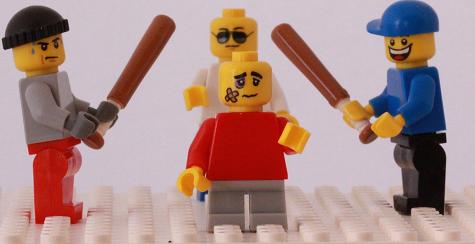
There are bullies,
There are meanies,
And they don’t play fair.
They sit in the towers and they hide everywhere.
They say the toys are “mine.”
They don’t want to share.
They draw the battle line,
They pretend that they care.
There are bullies,
There are meanies,
And they play on our block.
Bystanders turn conspirators adding to the shock.
They may never see the light
Or change their world view,
They will likely die “right”
As they threaten that they’ll sue.
There are bullies,
There are meanies,
And they attack one by one,
Isolating victims until the last is gone.
They pretend to play well
But they can’t hide their hate.
And we thank them for that gift,
They don’t see it motivates!
At one time or another, most of us have experienced bullying. The motivation for bullying behavior is usually deeply rooted, maybe in feelings of fear of inadequacies. In the business world it seems to come from a mindset of scarcity not abundance. Bullying is often insidious and covert or passive aggressive, the most challenging of behaviors to address openly.
Alfred Adler theorized that people have a number of faulty beliefs for misbehavior: Inadequacy, Power, Revenge, and Jealousy or Superiority; these are likely the common relevant denominators. When people suffer from any of these negative emotions, left unaddressed they can turn into cognitive distortions and faulty beliefs about belonging presented in bullying behavior. It’s difficult for the average person to address them directly. In fact, it’s most likely bullies don’t really know why they act the way they do. But if no one challenges them, they will be happy to continue. The amount of control bullies try to exhibit outwardly can be indicative of their feelings of being out of control in their inner world.
In our work at Strategic Play, in conjunction with the #I’mAntiBully Movement, we have been focusing on addressing the bystander. The bystander is the person who sees the bullying happening, but for whatever reason is afraid to speak up. They might be inwardly focused on their own situation and are unaware of the bullying. They might be happy the bully isn’t targeting them. It’s even possible that, on some level, their needs are also being met by the bullying.
LEGO® SERIOUS PLAY® is a wonderful methodology to help people talk about challenging issues; bullying behavior is definitely a challenging issue. We can use LSP to challenge people to look at their landscape and ask themselves, “Who within my landscape is being targeting by bullying? What could I be doing to aid and abet this behaviour? What could I do to help prevent or stop it?”
To stop bullying behaviors, the bystander must step up, speak up, and take a risk. It’s the bystander, not the victim, who can make it clear to the bully that this behavior is not appropriate. Bystanders who say nothing are guilty of being a co-conspirator.